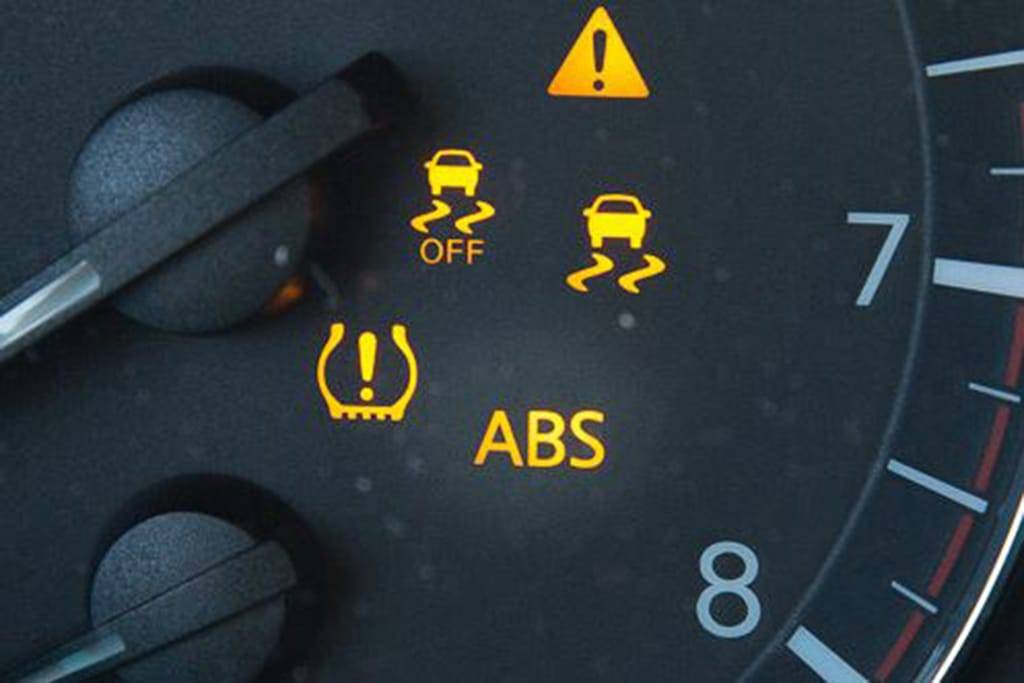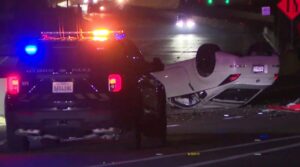ABS stands for Anti-Lock Braking System. It is an automotive safety system that prevents the wheels of a vehicle from locking up during hard braking, allowing the driver to maintain steering control and stop distance. ABS works by selectively applying and releasing brake pressure at each wheel independently as needed, which helps keep all four tires in contact with the road surface and prevents skidding or sliding.
As a result, drivers can quickly and safely react to emergency situations while maintaining control over their vehicles.
Abs stands for “anti-lock braking system” and is a feature found on most modern vehicles. It helps keep your car from skidding and sliding when you hit the brakes, allowing you to maintain control of your vehicle in emergency situations. Abs works by automatically applying and releasing brake pressure as needed so that all four wheels remain in contact with the ground while stopping.
This prevents tire lockup which can cause loss of traction or dangerous fishtailing on slippery surfaces.
Is It Safe to Drive a Car With Abs Light On?
No, it is not safe to drive a car with the ABS light on. The Anti-lock Braking System (ABS) helps drivers maintain control of their vehicle during emergency braking and difficult driving conditions by preventing wheel lockup. Without proper functioning of this system, your vehicle’s brakes could become ineffective or even locked up in certain situations.
This can cause you to lose control of your car and possibly lead to an accident. Additionally, if the ABS warning light is illuminated then there may be an underlying issue that needs to be addressed immediately before continuing operation of the vehicle. It is important to take any warnings from your dashboard seriously and have any necessary repairs done as soon as possible for your own safety and the safety of those around you while driving.
What Causes the Abs Light to Come On?
The ABS (anti-lock braking system) light on your dashboard is designed to alert you when something in the braking system needs attention. It can come on for a variety of reasons, ranging from low brake fluid levels to worn out brakes or even a faulty sensor. Low brake fluid levels occur when there’s not enough hydraulic pressure being generated within the lines of the braking system, resulting in a decrease in braking power and an increase in stopping distance that could lead to an accident.
Worn out brakes need replacing because they can no longer grip onto the rotors effectively, which causes unevenly distributed force during sudden stops and can also cause wheel lockup if left unchecked. Finally, faulty sensors are often caused by dirt or debris interfering with their operation and will require cleaning or replacement if it isn’t possible to clear them manually. Faulty wiring connections can also be at fault here too so it’s important that any issues with lights coming off and on are looked into immediately – safety should always take priority over aesthetics!
How Do I Get the Abs Light to Turn Off?
If your ABS light has come on, it can be concerning. Fortunately, you do not have to take your car into the shop right away to get it off. You may be able to troubleshoot the issue and turn off the ABS light yourself.
First, make sure that all of your wheel speed sensors are securely attached and in good working condition as they can cause this issue if something is loose or malfunctioning. Then check to see if there is a build-up of debris or corrosion around any of them which may interfere with their functioning properly. Once this is done, you should inspect all related wiring harnesses for signs of damage including frayed wires or broken connections.
If needed replace any damaged parts and ensure everything is reconnected properly before attempting further diagnosis steps such as using an OBD2 scanner device to read codes from the vehicle’s computer system for more specific trouble shooting instructions that pertain directly to your individual vehicle’s problems. With patience and some time spent researching online forums related specifically to diagnosing ABS lights issues in your particular model car, you should eventually be able to successfully reset the warning light so it no longer appears when starting up your engine again!
How Much Does It Cost to Fix Abs?
The cost of fixing an Anti-lock Braking System (ABS) will vary depending on the make and model of your car, as well as the severity of the problem. Generally speaking, you can expect to pay anywhere from $500 to over $1,000 for ABS repairs. This includes labor costs for diagnosing and repairing the system itself, plus any additional parts that might need replacement or repair.
In some cases, it may be necessary to replace a part entirely which could add up to hundreds more in expenses. Additionally, if you are having a mechanic work on your vehicle who is not certified by your manufacturer they may charge extra for their services so it is important to ask beforehand how much they charge before hiring them.

Credit: www.spinny.com
How to Fix Abs Light on Car
If your car’s ABS light is on, it could indicate a problem with the anti-lock braking system. To fix this issue, check the brake lines and sensors for any signs of damage or obstruction. If all looks good, you can try resetting the ABS light through your vehicle’s diagnostic port by using an OBD2 scanner.
Alternatively, if you don’t have access to one of these scanners, take your car to a qualified mechanic who will be able to diagnose and repair any issues that may be causing your ABS light to stay on.
Is It Safe to Drive My Car With the Abs Light on
It is not recommended to drive your car with the ABS light on. The Anti-lock Braking System (ABS) helps you maintain control of your vehicle during sudden stops and slippery conditions, so it’s important to have this system working properly. If the ABS light comes on, then there may be a problem with one or more components in the system that could lead to decreased braking performance and increased risk of an accident.
It’s best to take your car for service as soon as possible if the ABS light turns on.
What Causes the Abs Light to Come on And Go Off?
The ABS light coming on and going off is typically a warning that there is an issue with the Anti-lock Brake System (ABS). Common causes of this include low brake fluid, failed wheel sensor, faulty wiring or a malfunctioning ABS control module. If the ABS light continues to come on and go off despite replacing parts or checking connections, it’s recommended to have your car serviced by a mechanic as soon as possible.
Abs And Brake Light on
When your car’s ABS (anti-lock braking system) and brake lights come on, it is an indication that your vehicle needs to be serviced. This could mean a problem with the brakes, such as a low or empty brake fluid reservoir, problems in the wiring of the ABS system, or something else entirely. It is important to have these issues addressed by a qualified mechanic right away for safety reasons.
How to Turn on Abs System
To turn on an ABS system, locate the power switch in your car’s fuse box, which may be labeled “ABS.” Flip the switch to the “On” position and verify that it is properly engaged. This will activate your anti-lock braking system, allowing you to take advantage of its safety features.
If you’re unsure where your fuse box is located or what type of power switch controls your ABS system, consult your vehicle manual for more information.
Abs Car Light
The ABS car light is an important indicator in the dashboard of your vehicle. This warning light typically illuminates when there is a problem with your anti-lock brakes or electronic brake force distribution systems, and it’s important that you take action right away if this light appears on your dash. If you notice that this light has come on while driving, make sure to pull over as soon as possible and have the issue checked out by a certified mechanic.
How Does Abs Work
Abs, or abdominal muscles, are made up of several muscle groups that work together to provide stability and support for the body. When these muscles contract, they pull in the abdomen making it appear toned and flat. To get strong abs you must focus on exercises that target all the different muscles including your rectus abdominis (the six-pack muscle), obliques (side abdominal muscles), transverse abdominis (deep core stabilizer) and erector spinae (lower back).
Through a consistent routine of exercises specifically targeting each muscle group, you can develop stronger abs and improve your overall fitness level.
What Does It Mean When the Abs And Brake Light Come on at the Same Time
When the ABS and Brake warning lights come on at the same time, it could indicate a serious issue with your vehicle’s braking system. This could be due to low brake fluid levels, or an issue with the Anti-Lock Braking System (ABS). It is important to have your car checked by a certified mechanic as soon as possible in order to ensure that any issues are fixed promptly and safely.
Conclusion
This blog post has explored the meaning of ABS on a car, and it is clear that this is an important safety feature. The anti-lock braking system (ABS) helps to keep drivers safe by preventing wheel lockup and allowing for more control over the vehicle. With advances in technology, cars with ABS are becoming increasingly common, making them a great addition to any driver’s car.
Knowing what ABS stands for can help give drivers peace of mind when behind the wheel and ensure they remain safe on the road.






